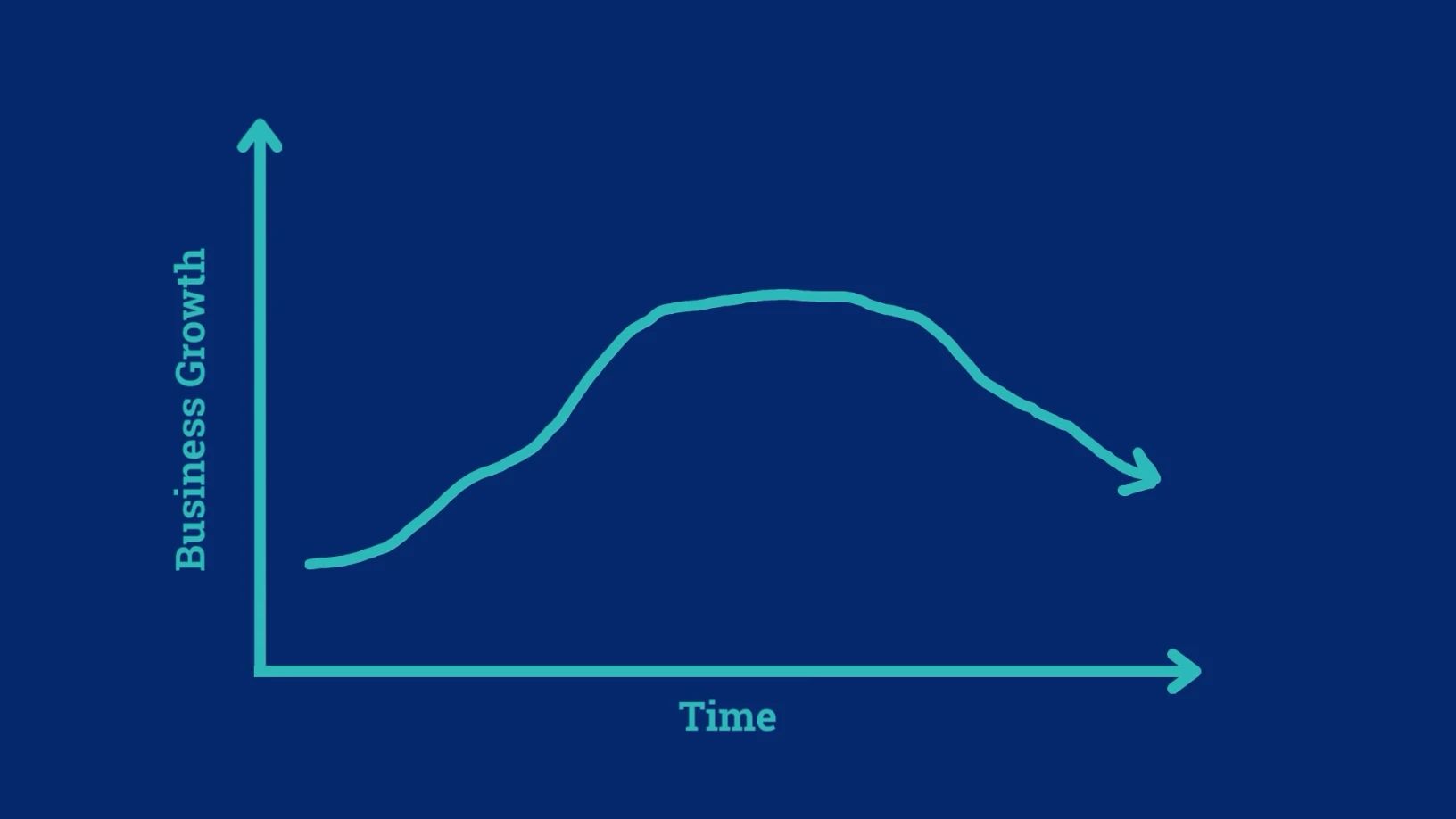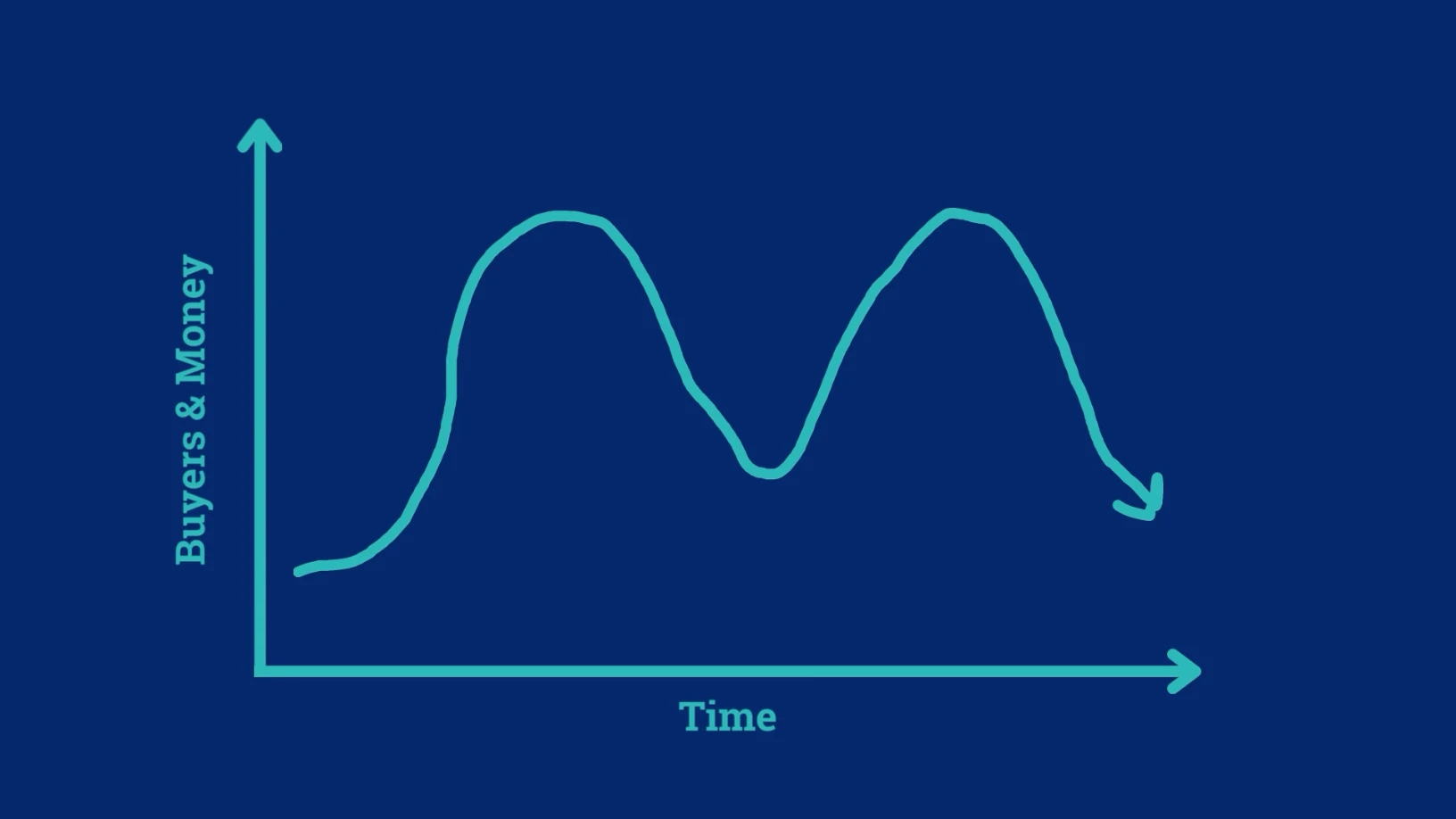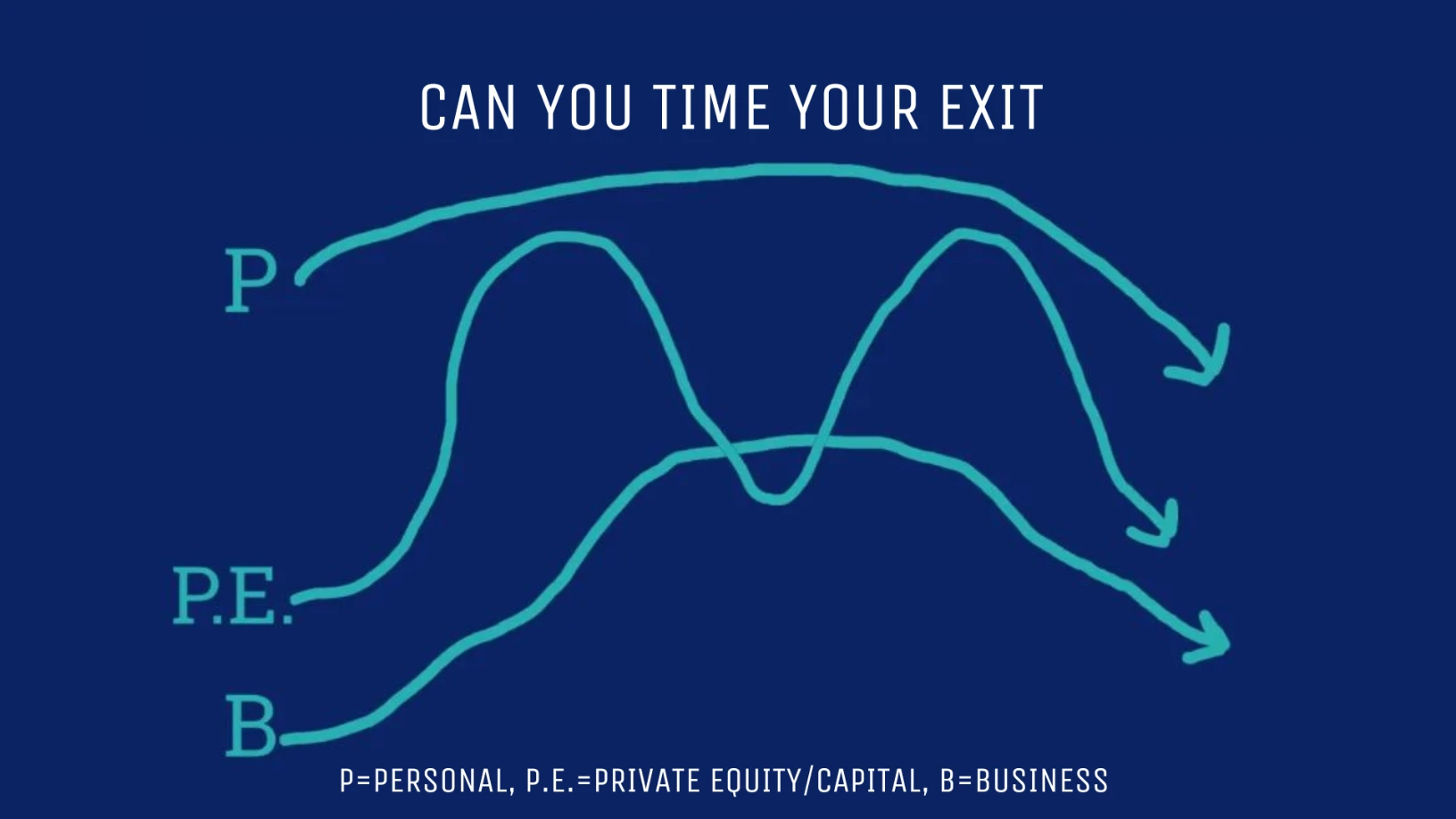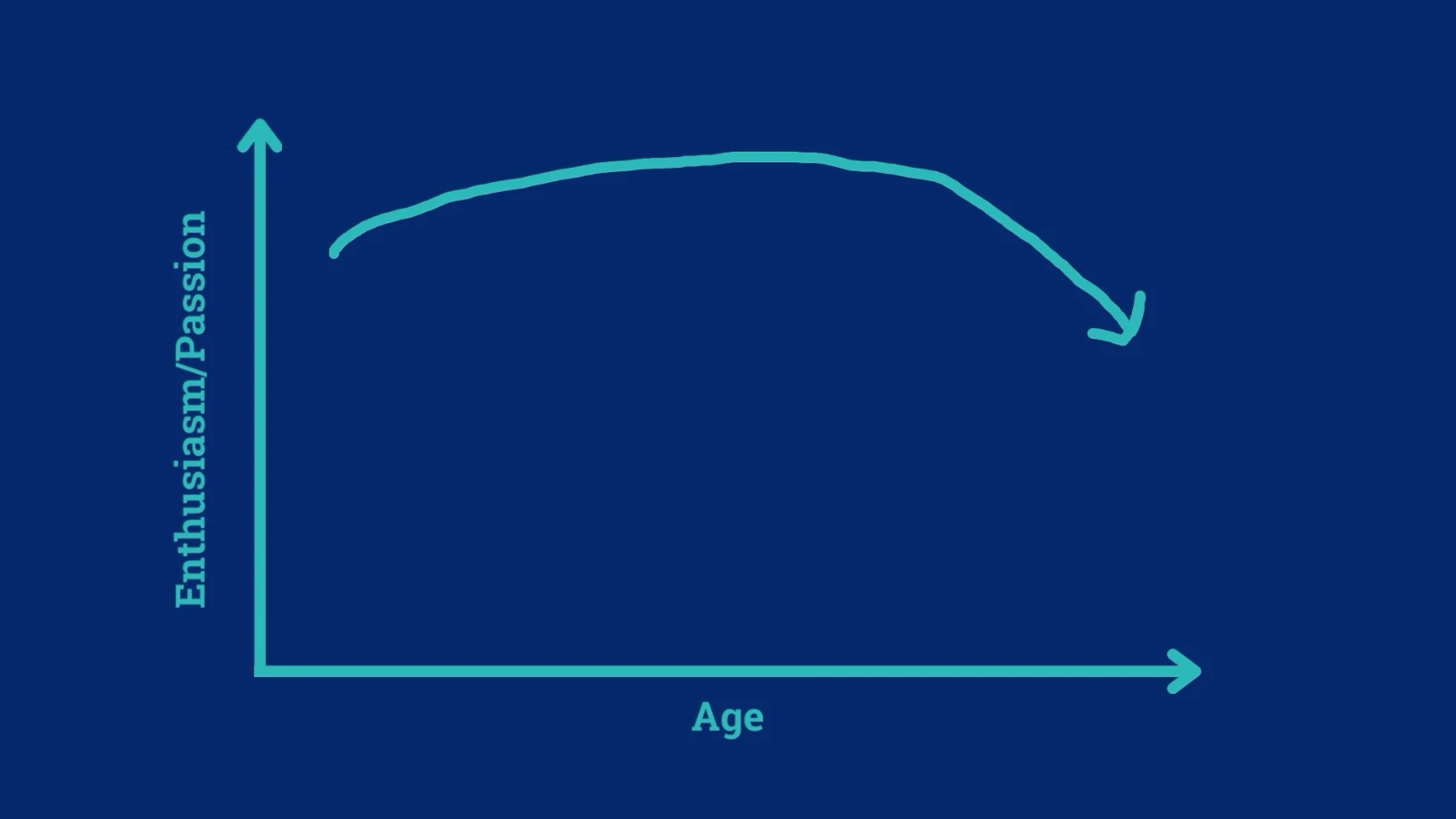PREFER TO READ? Jump below the timestamps and you can!
Timestamps:
00:00 Introduction
00:26 Three Exit Timing Factors
00:45 Personal Timing
01:06 Business Life Cycle
01:30 Capital Market Cycle
01:59 Visualizing the Factors
03:12 How Will You Time It?
03:57 How to Make the Timing Irrelevant
05:00 Closing
One of the greatest benefits of having an exit plan is that you don’t have to try to time your exit. It allows you to make the timing of your exit irrelevant. That’s what we’re going to talk about today—how to make the timing of your exit irrelevant so that you can exit your business when you’re ready and with the wealth you need.
The Key Factors in a Successful Exit
There are many factors that contribute to a successful exit, beyond just having a profitable business. We can break these factors into three key areas:
- Your Personal Timing
- Your Business Lifecycle
- The Private Capital Market Cycle
Personal Timing
When considering your personal factors, several elements come into play. These include your age, health, and motivation to keep running the business. Additionally, if you plan to transfer the business to a family member, you need to consider their readiness as well.
Business Lifecycle
Next, let’s look at your business cycle. Where is your business in its lifecycle?
- Are you in a rapid growth phase, expanding quickly?
- Have you reached a stable, mature phase where profits are steady?
- Or are you entering a decline, where the future looks uncertain?
Private Capital Market Cycle
Lastly, consider the private capital market cycle. How many buyers are out there right now? Are they willing to invest heavily, or are interest rates rising and slowing things down? What is the state of the economy, and how much capital is available for acquisitions?
These are critical questions to consider when thinking about timing your exit.
Aligning Your Exit With the Right Timing
Now, let’s dive into the concept of aligning your exit with the right timing by considering three key timelines: your personal timeline, your business lifecycle, and the private capital market cycle.
1. Your Personal Timeline
As a business owner, your journey typically starts with a lot of enthusiasm and drive to grow the business. Over time, as you mature and settle into a routine, that initial energy can begin to fade. This natural progression affects your motivation to grow the business, which is why it’s essential to assess your personal readiness. Ask yourself:
- Are you still excited to drive growth, or has the day-to-day operation become routine?
- How does your age and health factor into your decision-making?
- If you plan to transfer the business to a family member, is the next generation ready to take over?
Your personal timeline is often the most subjective, but it plays a crucial role in determining when you might be ready to step away.
2. Your Business Lifecycle

Next, let’s look at the lifecycle of your business.
- Early Stages: Businesses typically experience slow growth in the beginning.
- Exponential Growth: Over time, your business may hit a phase of rapid expansion, where profits soar and everything seems to be on an upward trajectory.
- Stabilization: Eventually, the business growth plateaus, profits stabilize, and the business reaches maturity.
- Decline: After a period of stability, many businesses enter a phase of decline, where profits dip, and innovation is required to reinvigorate growth.
Understanding where your business sits in this cycle is critical in planning your exit. Exiting during or before the decline can help maximize the value you get for the business.
3. The Private Capital Market Cycle

Finally, let’s consider the private capital market cycle. These cycles tend to be more frequent and often fluctuate with the broader economy. In a strong economy, with favorable interest rates, investors may have access to capital, and the appetite for acquisitions increases. However, in periods of economic downturn or when interest rates rise, buyers tend to become more conservative, and acquisition offers may drop.
This is where timing the market becomes difficult. For example, your business may be performing well, but the market may be in a downturn with fewer buyers and less capital available. Conversely, the market may be booming, but if your business is declining, you may not get the value you expect.
How Do You Align These Timelines?

Given the variations in these three timelines, how do you decide when the right time to exit is? The reality is, most people can’t time their exit perfectly. Whether you’re talking about the stock market or the private equity market, it’s nearly impossible to predict market conditions with consistency.
The Solution: Build Value Through Exit Planning
So, how do you solve this problem? It’s simpler than you might think, but it does require some effort. To have a business that can be sold during good times or bad, you need to focus on building value and unlocking your personal wealth.
This is where exit planning comes in. By aligning your business, personal, and financial goals, and by regularly reassessing your progress, you’ll be prepared when the time comes to exit. Whether every quarter or every 90 days, take the time to ask yourself:
- “Am I ready to exit, or do I want to keep growing?”
- “Am I motivated to keep going because the business is still growing?”
By keeping this focus, you make the timing of your exit irrelevant. You’ll be prepared to exit when you’re ready, and you’ll get the value you need—whether the market is favorable or not.
In Conclusion
To make the timing of your exit irrelevant, focus on building value in your business and preparing for the future. That way, whether you decide to exit on your own terms or an unforeseen event forces your hand, you’ll still be in a position to get the value you’ve worked hard to achieve.
As always, I want to see you succeed. I want to see you grow your business and exit when you’re ready with the wealth you need. Feel free to reach out for a free strategy call anytime. I’d love to hear your story and learn how you plan to make the timing of your exit irrelevant.

